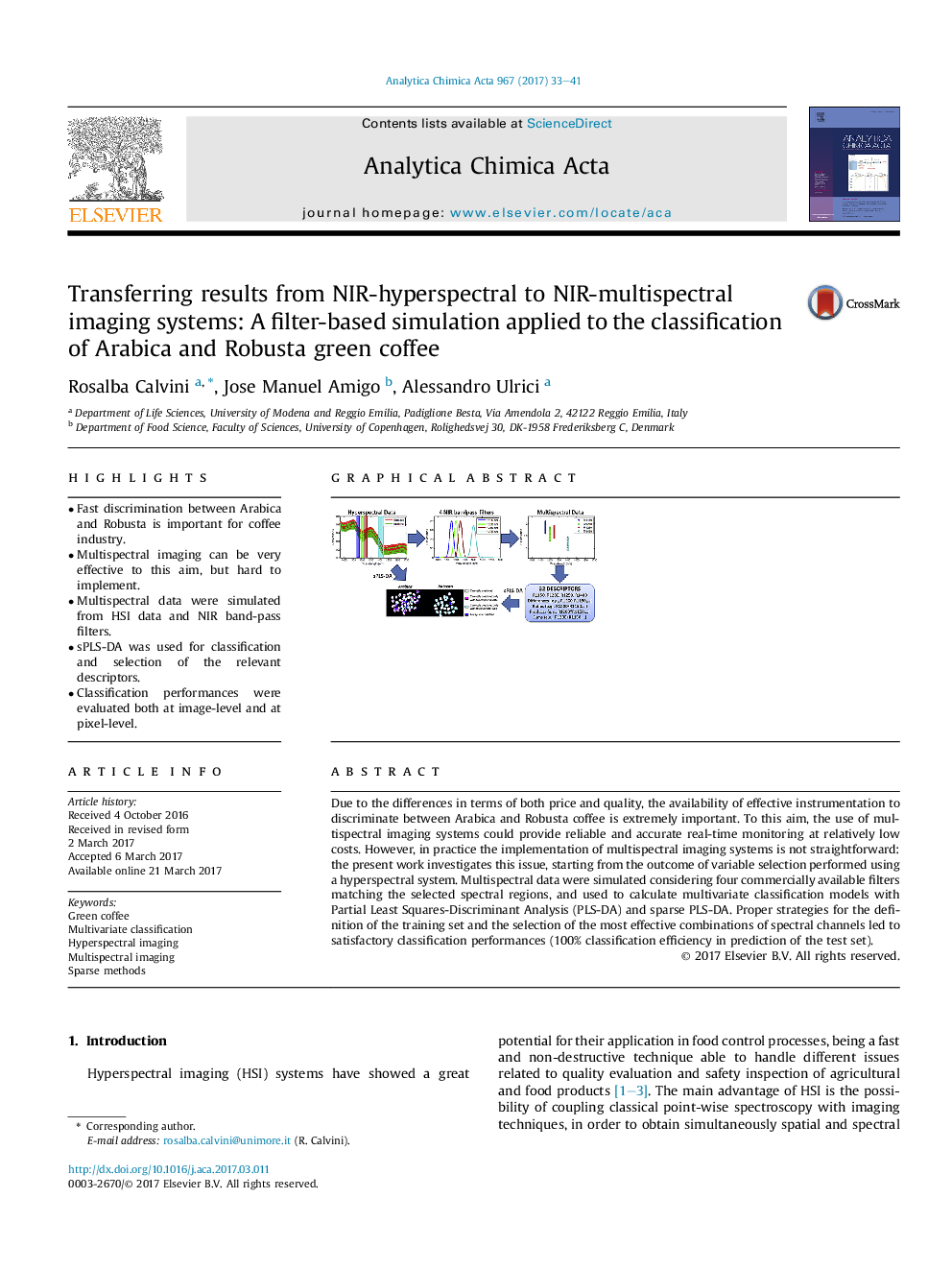| Article ID | Journal | Published Year | Pages | File Type |
|---|---|---|---|---|
| 5130936 | Analytica Chimica Acta | 2017 | 9 Pages |
â¢Fast discrimination between Arabica and Robusta is important for coffee industry.â¢Multispectral imaging can be very effective to this aim, but hard to implement.â¢Multispectral data were simulated from HSI data and NIR band-pass filters.â¢sPLS-DA was used for classification and selection of the relevant descriptors.â¢Classification performances were evaluated both at image-level and at pixel-level.
Due to the differences in terms of both price and quality, the availability of effective instrumentation to discriminate between Arabica and Robusta coffee is extremely important. To this aim, the use of multispectral imaging systems could provide reliable and accurate real-time monitoring at relatively low costs. However, in practice the implementation of multispectral imaging systems is not straightforward: the present work investigates this issue, starting from the outcome of variable selection performed using a hyperspectral system. Multispectral data were simulated considering four commercially available filters matching the selected spectral regions, and used to calculate multivariate classification models with Partial Least Squares-Discriminant Analysis (PLS-DA) and sparse PLS-DA. Proper strategies for the definition of the training set and the selection of the most effective combinations of spectral channels led to satisfactory classification performances (100% classification efficiency in prediction of the test set).
Graphical abstractDownload high-res image (384KB)Download full-size image
